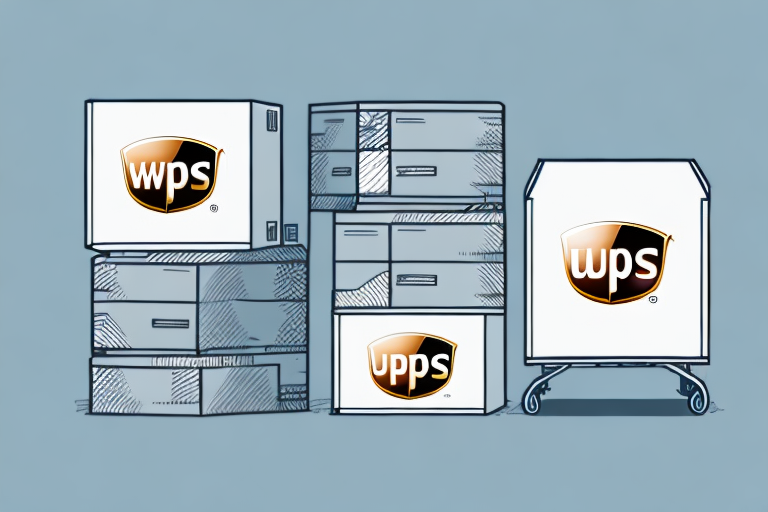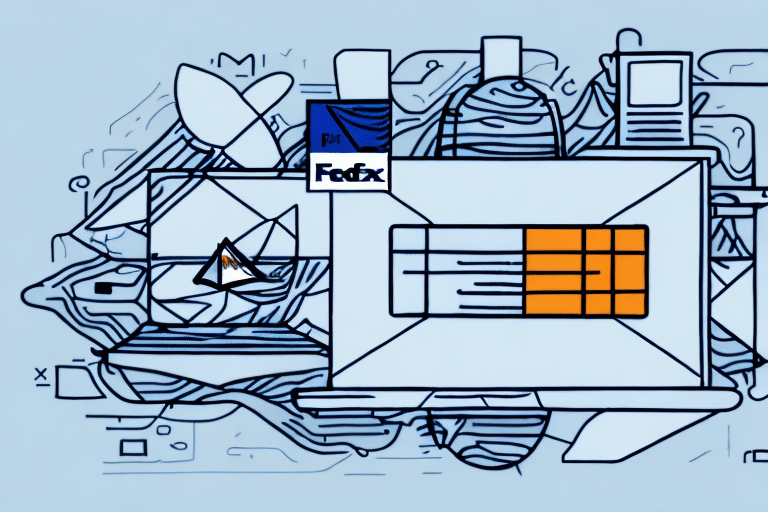Comparing Shipping Rates for 5 lbs Between UPS and USPS from 72143 to 28690
As the world becomes more connected and eCommerce continues to grow, shipping packages has become an essential component for businesses and consumers alike. Among the variety of shipping providers available, UPS and USPS stand out as two of the most popular in the United States. This article compares shipping rates for 5 lb packages from ZIP code 72143 to 28690, providing a comprehensive analysis of the factors influencing shipping rates, tips to save on shipping costs, and strategies to navigate common delivery issues.
Understanding the Factors That Affect Shipping Rates
The cost of shipping a package is influenced by several factors, including:
- Weight and Size: Heavier and larger packages generally incur higher shipping costs.
- Distance: The greater the distance between the origin and destination, the higher the shipping cost.
- Delivery Time: Expedited or overnight shipping services are typically more expensive than standard ground shipping.
- Shipping Provider: Different providers have varying pricing structures and service offerings.
- Additional Services: Options like tracking, insurance, and signature confirmation can add to the overall cost.
According to the USPS Pricing Guide, the cost structure varies significantly based on these factors, making it essential to evaluate each aspect carefully.
What to Consider Before Choosing a Shipping Provider
Before selecting a shipping provider, consider the following key factors:
- Budget: Determine your shipping budget and what you are willing to spend.
- Delivery Timeframes: Assess the delivery speed required for your shipments.
- Additional Services: Identify any additional services you may need, such as tracking, insurance, or signature confirmation.
- Reliability and Customer Service: Research the provider's reputation for on-time deliveries and effective customer support.
- Coverage Area: Ensure the provider can deliver to all required locations without restrictions.
Reputable sources like the Consumer Reports can offer insights into provider reliability and customer satisfaction.
The Pros and Cons of Using UPS vs USPS for Shipping
UPS:
- Pros:
- Faster shipping times, especially for ground and air shipments.
- Comprehensive tracking system with real-time updates.
- Various delivery options, including signature confirmation and UPS Access Point deliveries.
- Reliable for international shipping with extensive global coverage.
- Cons:
- Generally more expensive than USPS for similar services.
- Additional fees for residential deliveries and fuel surcharges.
USPS:
- Pros:
- Often cheaper than UPS, especially for small and lightweight packages.
- Offers flat-rate boxes, providing cost-effective options for specific package sizes.
- Extensive network of post offices and drop-off locations, enhancing accessibility.
- Various mailing options, including Priority Mail and First-Class Mail.
- Cons:
- Slower delivery times compared to UPS, particularly for standard shipping.
- Reports of lost or delayed packages can be higher, affecting reliability.
For a detailed comparison, refer to the ShipScience comparison guide.
How to Calculate Shipping Costs for Your Package
Calculating shipping costs involves the following steps:
- Weigh and Measure: Accurately weigh your package and measure its dimensions.
- Use Shipping Calculators: Visit the UPS Shipping Calculator and the USPS Postage Price Calculator to input your package details and get estimates.
- Choose the Service: Select the shipping service that best fits your delivery timeframe and budget.
- Check for Discounts: Look for available discounts, such as bulk shipping rates or business account benefits.
- Consider Packaging: Use appropriate packaging to avoid unnecessary weight and dimensions that can increase costs.
Utilizing tools like ShipStation can help streamline the process and provide more accurate estimates based on real-time data.
A Step-by-Step Guide to Comparing Shipping Rates
To effectively compare shipping rates between UPS and USPS, follow this step-by-step guide:
- Determine Package Specifications: Accurately measure and weigh your package.
- Access Shipping Calculators: Navigate to the UPS and USPS shipping calculators.
- Input Details: Enter the package weight, dimensions, origin (72143), and destination (28690).
- Select Services: Choose comparable shipping services (e.g., UPS Ground vs. USPS Priority Mail).
- Review Costs: Compare the estimated costs provided by both carriers.
- Evaluate Additional Fees: Check for any extra charges like fuel surcharges or residential delivery fees.
- Assess Delivery Times: Compare the estimated delivery dates and choose based on urgency.
- Consider Reliability: Factor in the reliability and tracking capabilities of each provider.
This method ensures a comprehensive comparison, allowing you to make an informed decision based on cost, speed, and reliability. For more insights, visit ShipScience's shipping rate comparison tools.
Analyzing the Delivery Timeframes of UPS and USPS for 5 lbs Packages
The delivery timeframes for a 5 lb package from ZIP code 72143 to 28690 vary between UPS and USPS based on the selected shipping service:
- UPS:
- UPS Ground: Typically 1-5 business days.
- UPS 3 Day Select: Guaranteed delivery within 3 business days.
- UPS 2nd Day Air: Delivery within 2 business days.
- UPS Next Day Air: Guaranteed next-day delivery.
- USPS:
- Priority Mail: 1-3 business days.
- Priority Mail Express: Overnight to 2-day delivery.
- First-Class Package: 1-5 business days.
While UPS generally offers faster and more reliable delivery options, USPS provides competitive timeframes, especially with Priority Mail services. According to USPS Delivery Standards, Priority Mail offers a balance between speed and cost, making it a suitable option for many businesses.
Both carriers provide tracking services, allowing you to monitor your package's progress in real-time. UPS offers more detailed tracking information, which is beneficial for high-value or time-sensitive shipments.
Tips to Save Money on Shipping Costs for Small Packages
Reducing shipping costs is crucial for businesses looking to maintain profitability. Here are some strategies to save money on shipping small packages:
- Use Flat-Rate Boxes: USPS offers flat-rate boxes that allow you to ship packages at a fixed price, regardless of weight or distance, as long as the items fit within the box. This can be a cost-effective option for small, heavy items.
- Ship During Off-Peak Times: Shipping during periods of low demand can sometimes result in lower costs and faster delivery times.
- Compare Carrier Rates: Regularly compare rates from different carriers to ensure you are getting the best deal. Tools like ShipStation can help automate this process.
- Optimize Packaging: Use appropriately sized packaging to minimize weight and avoid unnecessary dimensional weight charges.
- Leverage Discounts: Many carriers offer discounts for bulk shipping or business accounts. Enroll in programs like UPS's Business Shipping or USPS's Business Select to access reduced rates.
- Utilize Regional Carriers: For certain regions, local carriers might offer more competitive rates compared to national carriers.
Implementing these strategies can lead to significant savings on shipping costs. For more tips, refer to the ShipScience cost-saving guide.
What Customers Are Saying About UPS and USPS Shipping Services
Customer reviews provide valuable insights into the performance and reliability of shipping services:
- UPS: Customers often praise UPS for its reliability and speed, especially for time-sensitive deliveries. The advanced tracking system and customer service are frequently highlighted as major advantages. However, some users report higher costs compared to other carriers.
- USPS: USPS is appreciated for its affordability and extensive network of post offices, which makes drop-offs convenient. Despite these strengths, some customers express concerns about occasional delays and lost packages.
According to a survey by Statista, customer satisfaction for USPS hovers around 70%, while UPS maintains a higher satisfaction rate of approximately 80%, reflecting UPS’s emphasis on reliability and customer service.
When choosing between UPS and USPS, consider the feedback on reliability, cost, and customer service to determine which provider aligns better with your shipping needs.
The Importance of Tracking Your Package During Transit
Tracking your package ensures transparency and security throughout the shipping process. Both UPS and USPS offer robust tracking systems:
- UPS Tracking: Provides detailed real-time updates, including scanned locations and estimated delivery times. It allows for proactive management of shipments and quick identification of any issues.
- USPS Tracking: Offers basic tracking updates, with more detailed information available for Priority Mail and higher-tier services. While not as comprehensive as UPS, it provides sufficient information for most standard shipments.
Tracking your package regularly can help you:
- Monitor the shipment’s progress and ensure timely delivery.
- Address any delays or issues promptly by contacting the carrier.
- Provide customers with accurate delivery estimates, enhancing service quality.
For enhanced tracking features, consider premium services offered by both carriers, such as UPS's UPS My Choice and USPS's Informed Delivery.
Understanding Insurance Options for Shipping Packages
Protecting your shipments against loss or damage is vital, especially for valuable items. Both UPS and USPS offer insurance options:
- UPS Insurance: Known as Declared Value, UPS offers coverage based on the declared value of the package. This coverage can be purchased at the time of shipping, providing financial protection against loss or damage.
- USPS Insurance: Offers insurance up to $5,000 for Priority Mail and Priority Mail Express shipments. Insurance can be added during the shipping process, ensuring compensation in case of unforeseen events.
It's essential to assess the value of your shipments and choose appropriate insurance options to mitigate risks. Detailed information on insurance can be found on the UPS Insurance page and the USPS Insurance page.
How to Properly Label and Package Your 5 lbs Shipment
Proper labeling and packaging are crucial to ensure safe and timely delivery:
- Accurate Addressing: Double-check the recipient’s address, including ZIP codes, to prevent delivery errors. Use clear, legible handwriting or printed labels.
- Secure Packaging: Choose sturdy packaging materials that can withstand transit. For a 5 lb package, a medium-sized box with adequate padding (e.g., bubble wrap or packing peanuts) is recommended.
- Label Placement: Place the shipping label on the largest surface of the box, avoiding seams and edges to ensure scanners can easily read the barcode.
- Include Necessary Documentation: If shipping internationally, ensure all customs forms and necessary documentation are included and properly filled out.
- Seal Properly: Use strong packing tape to securely seal the package, reinforcing all seams and edges.
For more detailed packaging guidelines, refer to the UPS Packaging Guide and the USPS Packaging Guide.
Navigating Common Issues with UPS and USPS Deliveries
Even with reliable carriers, issues can arise during the shipping process. Common problems include:
- Lost Packages: Misrouted or misplaced packages can occur, leading to delays and the need for retracing steps.
- Damaged Packages: Improper packaging may result in damage during transit.
- Delayed Deliveries: Unforeseen circumstances like weather or logistical challenges can cause delays.
To address these issues:
- Contact Customer Service: Reach out to the carrier’s customer service promptly to report and resolve issues.
- Use Tracking Information: Monitor your package’s status to identify and address problems early.
- File Claims: If a package is lost or damaged, file a claim with the carrier to seek compensation under the insurance policy.
- Document Everything: Keep records of all communications and actions taken to facilitate swift resolutions.
For assistance, visit the UPS Customer Service or the USPS Missing Mail page.
Making an Informed Decision Between UPS and USPS for Your Next Shipment
Choosing between UPS and USPS depends on various factors tailored to your specific shipping needs:
- Budget: USPS generally offers more affordable rates for small and lightweight packages, while UPS provides competitive pricing for more extensive shipping needs.
- Delivery Speed: UPS is ideal for time-sensitive deliveries with its expedited services, whereas USPS serves well for standard shipping timelines.
- Service Reliability: UPS tends to have higher reliability with fewer delays, making it suitable for critical shipments.
- Tracking and Security: UPS offers more advanced tracking and security options, beneficial for valuable or sensitive items.
- Range of Services: Both carriers offer a variety of services, but UPS may have more options for business and international shipping.
By carefully evaluating your priorities and leveraging tools like ShipScience, you can select the carrier that best aligns with your shipping requirements, ensuring cost-effectiveness and reliability.




















